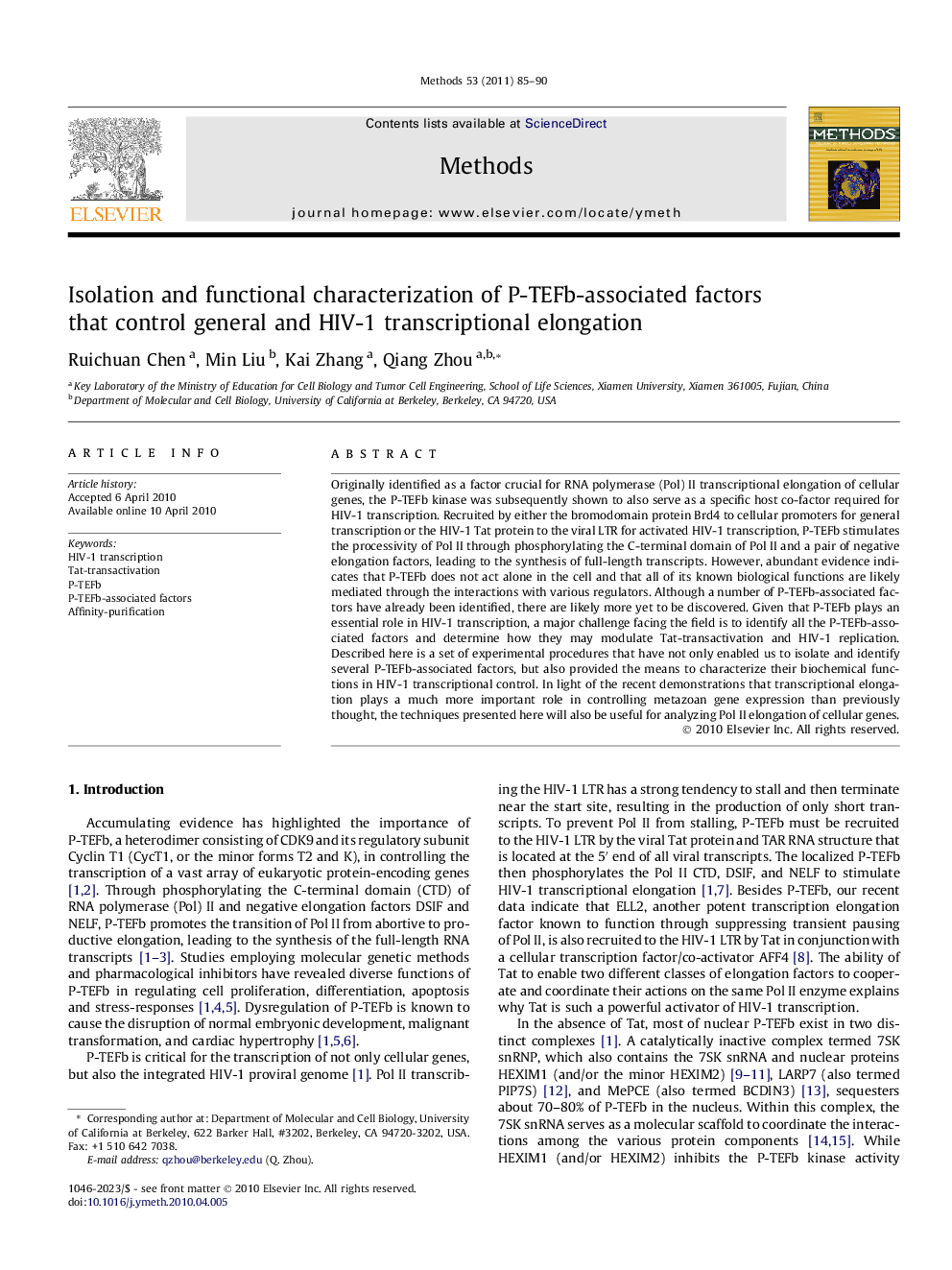| Article ID | Journal | Published Year | Pages | File Type |
|---|---|---|---|---|
| 1993896 | Methods | 2011 | 6 Pages |
Originally identified as a factor crucial for RNA polymerase (Pol) II transcriptional elongation of cellular genes, the P-TEFb kinase was subsequently shown to also serve as a specific host co-factor required for HIV-1 transcription. Recruited by either the bromodomain protein Brd4 to cellular promoters for general transcription or the HIV-1 Tat protein to the viral LTR for activated HIV-1 transcription, P-TEFb stimulates the processivity of Pol II through phosphorylating the C-terminal domain of Pol II and a pair of negative elongation factors, leading to the synthesis of full-length transcripts. However, abundant evidence indicates that P-TEFb does not act alone in the cell and that all of its known biological functions are likely mediated through the interactions with various regulators. Although a number of P-TEFb-associated factors have already been identified, there are likely more yet to be discovered. Given that P-TEFb plays an essential role in HIV-1 transcription, a major challenge facing the field is to identify all the P-TEFb-associated factors and determine how they may modulate Tat-transactivation and HIV-1 replication. Described here is a set of experimental procedures that have not only enabled us to isolate and identify several P-TEFb-associated factors, but also provided the means to characterize their biochemical functions in HIV-1 transcriptional control. In light of the recent demonstrations that transcriptional elongation plays a much more important role in controlling metazoan gene expression than previously thought, the techniques presented here will also be useful for analyzing Pol II elongation of cellular genes.
